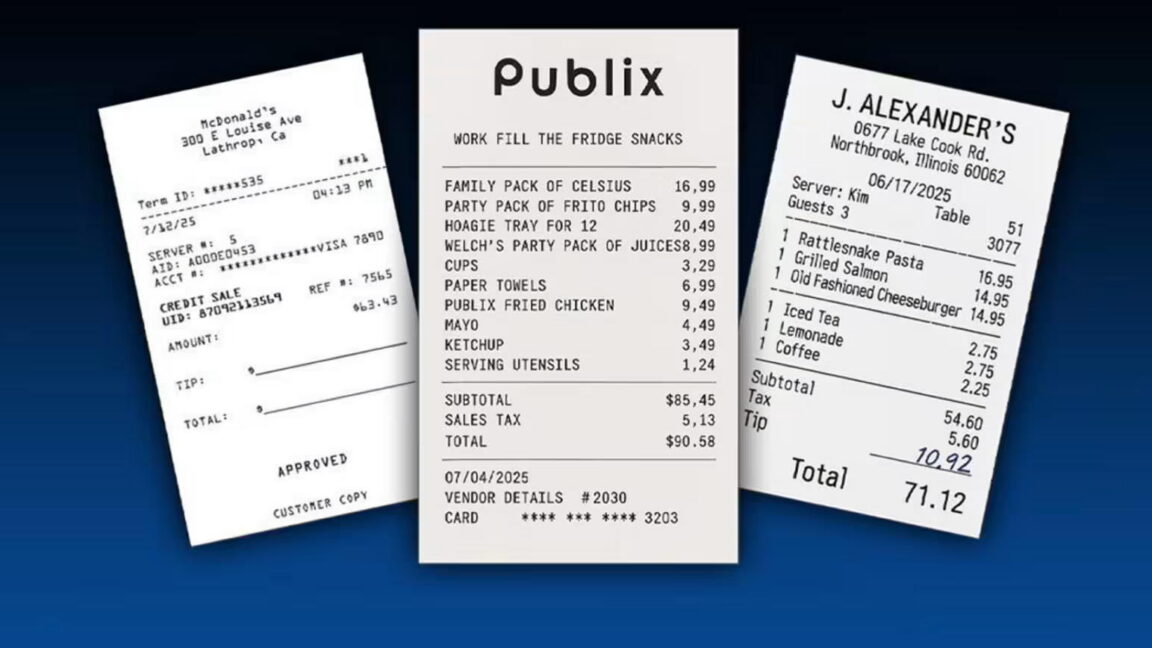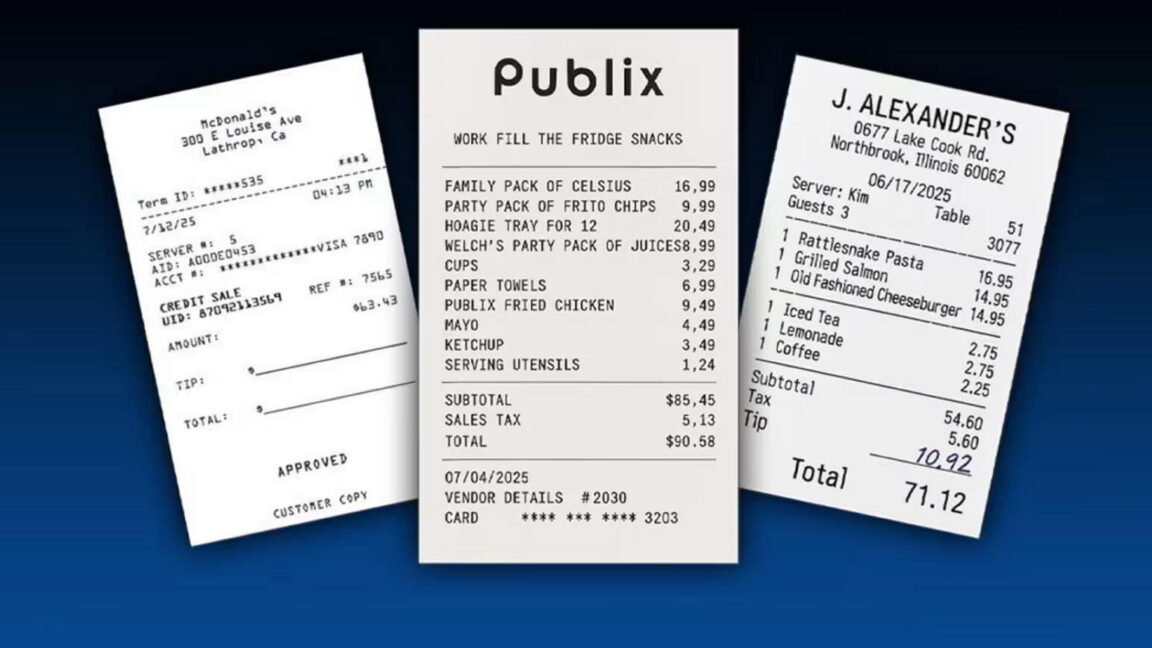Key Points
- AI tools can produce receipt images with realistic paper texture, itemization and signatures.
- Finance leaders report a rise in AI‑generated expense fraud, though it currently represents a small share of violations.
- A July survey found nearly 70% of CFOs suspect AI use in fraudulent expense claims, with about 10% certain it has occurred.
- Detection systems analyze image metadata and contextual travel data to spot inconsistencies.
- Fraudsters can bypass metadata checks by photographing or screenshotting the fake receipt.
- Experts note the low technical barrier for creating convincing fraudulent receipts.
- Companies are increasingly deploying AI‑based verification to supplement human reviewers.

AI‑Generated Receipts Challenge Expense Verification
Expense management platforms have begun displaying AI‑crafted receipt images that closely mimic authentic documents. The fake receipts include realistic paper wrinkles, detailed line items that match actual restaurant menus, and forged signatures, making them difficult for human auditors to spot. Executives in the finance sector note that while only a small portion of non‑compliant receipts are currently AI‑generated, the prevalence is expected to increase.
Chief financial officers are voicing concern that employees are leveraging AI tools to falsify travel expenses. A research survey conducted by a major software firm in July revealed that nearly 70 percent of CFOs believe their staff are using AI for fraudulent purposes, and about 10 percent are certain the fraud has occurred within their organizations. These findings underscore a widening vulnerability in expense processing workflows.
Industry Responses and Detection Efforts
In response to the emerging threat, companies are turning to advanced detection technologies that apply AI to identify counterfeit receipts. The detection software scans images for metadata signatures that indicate the use of generative AI platforms. However, fraudsters can circumvent this by photographing or screenshotting the fabricated receipt, which strips away origin metadata.
To bolster detection, platforms are also analyzing broader contextual information, such as repeated server names, timestamps, and travel itinerary details, to flag inconsistencies that may escape human notice. Product leaders emphasize that automated systems can maintain a higher level of focus and consistency than human reviewers, whose attention may wane over time.
Industry experts warn that the barrier to creating convincing fake receipts is low; individuals do not need advanced technical expertise to generate them. This ease of use amplifies the risk for organizations, prompting finance teams to adopt a combination of AI‑driven scrutiny and updated policy controls to mitigate potential losses.
Source: arstechnica.com
